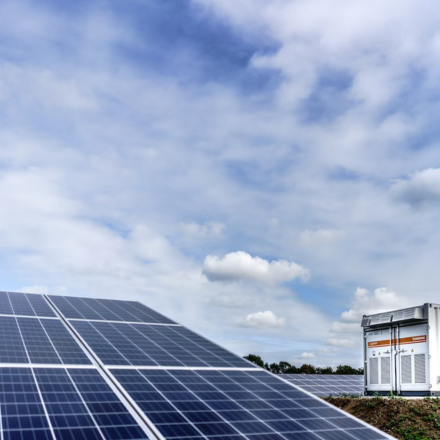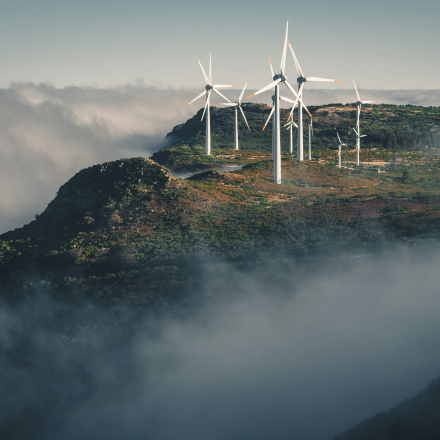Electrification and intermittency
Electrification of the energy mix is both a need and a reality. Produced from low-carbon energy sources, it helps reduce our dependence on fossil fuels. According to the IEA’s Net Zero Emissions by 2050 scenario, the share of electricity in total final energy consumption must increase from around 20% in 2022 to over 27% by 2030. This volume growth comes hand in hand with not only new uses (in particularly for electric vehicles) but also new modes of production (carbon-free). However, the latter comes with great variability, both in terms of demand and production sources. In France in 2019, wind power fluctuated between 46.7 GW and 0.4 GW and solar power 1.3 GW and 33.6 GW! Our capacity to store energy partly conditions the energy transition’s success. These days, this booming sector is called Long Duration Energy Storage (LDES). So much so, even an LDES Council was created during Cop 26, whose ambition is to increase storage capacity by at least eight while reducing costs by 60%.
The energy transition blind spot?
While the LDES Council’s ambitions may seem extreme, let’s not forget that the sector still remains underdeveloped. There is currently no established business model for storage solutions and only pumped energy transfer stations (STEP) can be considered mature, with a technical efficiency of around 80%. However, there is a willingness to invest in this field, as $910 million were invested globally in 2021, compared to $130 million in 2018. China is particularly active and accounts for more than 60% of new STEP investments. All technologies combined, the Asian superpower had a total new energy storage capacity of 8.7GW by the end of 2022 – an increase of 110% compared to the previous year – with the objective of reaching 50GW by 2025!
Diverse technological solutions
The electricity storage technological landscape includes several dozen different solutions, which can be grouped into large families. Mechanical solutions rely on kinetic and potential energy, which can be recovered when necessary. STEPs belong to this family and today constitute a large majority of capacity worldwide. They operate like traditional hydroelectric plants during peak hours, and use pumping solutions to reroute water from downstream to upstream during off-peak hours. Electrochemical solutions refer to all forms of batteries, like lithium-ion, lithium-iron-phosphate, sodium-sulfur, lead-acid, nickel-cadmium, and redox flow. They are currently developing at a fast rate, but a certain number of obstacles remain, such as the speed of degradation or the dependence on critical materials. Chemical solutions mainly consist of enhancing power-to-gas (P2G) by storing potential electricity in gaseous form (hydrogen or methane). Finally, thermal solutions are mainly based on the principles of sensible and latent heat by enhancing the ability of materials to absorb and release heat.
The battery boom
With the maturity of hydraulic solutions, batteries are left playing catch up. Driven by the wave of innovation linked to the development of electric vehicles, they are now establishing themselves as credible alternatives. The first avenue is actually the vehicles themselves with the development of V2G, which uses car batteries as a storage vector for the network. A study by Leiden University estimates that this solution could cover all short-term storage demand by 2030. At the same time, stationary batteries intended for long-term storage are also a developing market. The largest European power storage plant of this type was recently inaugurated in Belgium. Based on Tesla’s Megapack technology, it can deliver up to 50MW of power.
The promises of hydrogen
Hydrogen is considered a suitable vector for storing excess renewable energy produced. One of the main challenges today lies in storing this particularly low density and volatile gas. One promising solution is geological storage in salt caverns, with companies such as Geostock (a VINCI subsidiary) creating reservoirs deep in the ground! Meanwhile, other players are looking into the absorption properties of certain metals to help make it easy to store this highly touted gas. A team of CNRS researchers recently won the European Inventor of the Year award from the European Patent Office for their magnesium-based storage system.
A wealth of solutions
Beyond the dominant solutions on the market, a recent surge in innovation suggests unexpected developments for electricity storage. Gravity storage (beyond hydroelectric solutions) is perhaps one of the most surprising: it consists of dropping a significant amount of weight and recovering the energy produced in the process. The Swiss company Energy Vault is already developing a power storage plant in China based on this principle with a capacity of 25 MW. Meanwhile, sand batteries used for thermal energy storage also offer great promise as they don’t require expensive materials. In the Finnish city of Kankaanpää, the company Polar Night Energy deployed the first commercial-scale sand battery with a device that has 8MWh capacity. Finally, while flywheel energy storage technology is nothing new – it’s even one of the oldest! – it could actually find its footing given the scale of demand. This technology consists of storing energy by rotating a heavy object which is then released via a generator. Energiestro, recent winners of the EDF Pulse award, uses fiber-reinforced concrete to optimise the system. Meanwhile, the startup Revterra promises to exceed the storage time limit inherent to flywheels by using new materials or suspending the rotor.
From ancient technologies to the most futuristic, individual solutions to large power storage plants, the electricity storage sector is gathering high speed momentum – a necessity for the challenges facing the energy transition.



